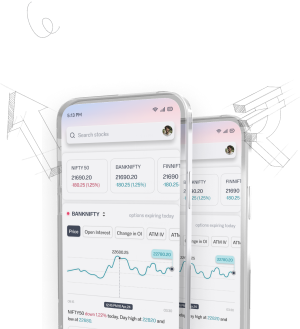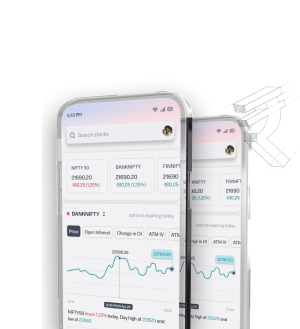ATM, ITM, OTM Explained: Master Nifty & Bank Nifty Trading for Indian Traders
💡 Ever wondered what ATM, ITM, and OTM mean when trading options?
More importantly, how do they impact your trading strategy as an option buyer or seller?
Let’s break it down in simple terms so you can make smarter, more profitable decisions! 💸
📝 Understanding #OptionsTrading
Before diving into ATM, ITM, and OTM, let’s get the basics straight: Options are contracts that give the buyer the right (not obligation) to buy/sell an underlying asset at a set price before a specific date.
There are two types of options: 📈 Call Options (buying) 📉 Put Options (selling)
🏦 What is ATM (At The Money)?
An option is At The Money (ATM) when the strike price is almost equal to the current market price of the underlying asset. 📊 For example, if a stock is trading at ₹100, a ₹100 strike price option would be ATM. ATM options are known for their balanced premium and time decay—ideal for quick moves! ⏳
💰 What is ITM (In The Money)?
An option is In The Money (ITM) if it has intrinsic value.
Call Option ITM: The strike price is below the market price. 📊 Example: Stock trading at ₹150. You own a Call Option with a ₹130 strike price—this is ITM because you can buy the stock at ₹130, lower than its current price of ₹150. Intrinsic value = ₹20.
Put Option ITM: The strike price is above the market price. 📊 Example: Stock trading at ₹150. You own a Put Option with a ₹170 strike price—this is ITM because you can sell the stock at ₹170, higher than its current price of ₹150. Intrinsic value = ₹20. ITM options move more in sync with the underlying price, making them less risky 👍
💸 What is OTM (Out of The Money)?
An option is Out Of The Money (OTM) when it has no intrinsic value, only time value.
Call Option OTM: Strike price is above the market price. Put Option OTM: Strike price is below the market price.
📊 Example: Stock at ₹100. A Call option with ₹110 strike price or a Put option with ₹90 strike price is OTM. OTM options are cheaper but require a bigger price move to become profitable. 🤑
🤔 Which Option Type is Best for Option Buyers?
Option Buyers should typically focus on ATM or slightly ITM options.
Why?
They strike a balance between being affordable and offering a decent chance to become profitable. 📈 ATM options can quickly gain value with small market moves. 💼 ITM options have intrinsic value and lower time decay risk.
Example: Stock at ₹500. You buy a Call Option with:
ATM Option: Strike price of ₹500 (same as the current market price). Affordable, gains value quickly.
ITM Option: Strike price of ₹480 (below market price). More expensive, but higher chance of profitability due to intrinsic value. ✅ ⚠️ OTM options are tempting but riskier, needing significant price movement to become profitable.
💼 Which Option Type is Best for Option Sellers?
Option Sellers prefer OTM options. Here’s why:
- OTM options have a higher probability of expiring worthless, letting the seller keep the premium.
- They benefit from time decay ⌛, as the option value erodes over time.
- Selling ATM or ITM options is riskier because of the higher chances of being exercised, leading to potential losses.❗ Example: Stock at ₹200. You sell a Call Option: OTM Option: Strike price of ₹220. High chance of expiring worthless, you keep the premium. 🎯
- ATM or ITM Options: Riskier because they could be exercised if the stock moves against you.
🚀 That’s a Wrap!
Remember, the choice between ATM, ITM, and OTM options isn't one-size-fits-all. It depends on your risk appetite, market outlook, and trading goals. Whether you're looking for safer plays or aiming for high-risk, high-reward moves, always align your strategy with your comfort level and capital! 💡
- ATM Options: Best for those expecting quick price moves, and balanced time decay.
- ITM Options: Safer for buyers, lower time decay, but more expensive.
- OTM Options: High risk/high reward for buyers; preferred by sellers for time decay benefits. 🧠📈
Disclaimer
The content provided is for educational purposes only and does not constitute financial advice. For full details, refer to the disclaimer document.




